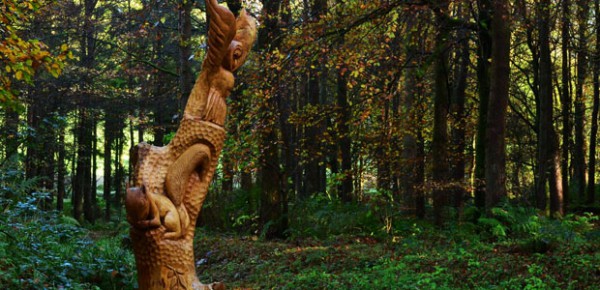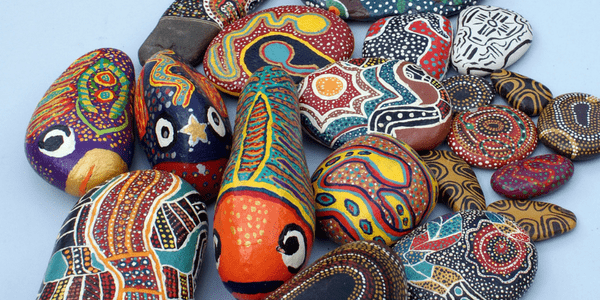 Animal totemism is a hot topic among magical folk, in particular Pagans and shamans. This, of course, has spawned a growing number of books about totems which vary in quality from excellent to appalling, as books are wont to do. Many of them attempt to be an improvement on Ted Andrews’ works, which spawned the “totem dictionary with some extra stuff” trend. In addition, there are numerous websites about totems, again of varying quality. It’s laughably easy to find the information you seek.
Animal totemism is a hot topic among magical folk, in particular Pagans and shamans. This, of course, has spawned a growing number of books about totems which vary in quality from excellent to appalling, as books are wont to do. Many of them attempt to be an improvement on Ted Andrews’ works, which spawned the “totem dictionary with some extra stuff” trend. In addition, there are numerous websites about totems, again of varying quality. It’s laughably easy to find the information you seek.
One of the biggest misapprehensions about the bulk of this material is that it is genuine traditional totemism “just like the Indians do it!” A lot of this has to do with the amount of cultural appropriation that first the New Agers, and then the Pagans, indulged in in regards to various Native American cultures. From the time Columbus ran into an island off the North American coast purely by accident, ’til the increase in social awareness in the 1970s, the indigenous people of the American continent were steadily demonized by those of a European origin. I had a friend who had no idea what his tribal background was, only that he was part Native. His grandfather, the person from whom that heritage came, was incredibly tight-lipped about it due to a lifetime of being ashamed of his genes. Wimmin’s Lib and Black Power in the 1970s. While this raised some recognition of the heavy bigotry against indigenous people, it also had an unexpected side effect.
All of a sudden, it was cool to be an Indian. I was born in 1978, but I’ve seen pictures of (Caucasian) hippies wearing moccasins, fringed buckskin jackets, beadwork, and so forth. This was paralleled in the fringe spiritual community as well. The “back to the Earth” movement that began to take hold led to whites wanting to be just like the Indians, supposedly noble savages who lived at one with Nature, spoke with the spirits all the time, and were morally superior to mainstream American culture because of it.
The 1980s and 1990s saw an increase in New Agery of all types — including pseudo-Native. While a few people from Native tribes came out with books (the quality of which is debated by other Natives) there were also whites who went so far as to pose as Native Americans, or who at least tried justifying themselves by claiming to have learned from Native teachers (many of whom were unverifiable in tribal records).1
The sale of Native culture included totemism. It fell prey to the same homogenization of other cultural traits — people talked about “Native American totemism” as if it were a single conglomerate that held true from the Mayans to the Inuits. The appropriators picked and chose among the lore whatever they found useful and discarded the rest, ignoring the claims of tribal people that “Native belief systems are COMMUNAL, not focused on the individual’s faith like Christianity, and are TRIBE-SPECIFIC.”2
In all fairness, most of the New Agers meant well. They weren’t trying to make money off the fad; they simply wanted to find a way to connect with Nature in a culture devoid of that connection. However, even today there are still people being exposed as frauds, and occasional accused of crimes such as rape.3
But let’s de-tangentalize and head back to totemism, shall we?
The roots of contemporary Pagan totemism
All this blending of ideas hit the Pagan community in a big way, particularly when Jamie Sams and David Carson published Medicine Cards, and then a few years later with Andrews’ first book, Animal-Speak. Some Pagans, being generally more down-to-earth and sticklers for research than New Agers, took the idea and began cutting out the pseudo-Native elements. While the history of totemism, particularly in Native American cultures, was acknowledged, Pagan totemism began to take on a unique flavour.
Pagan totemism draws primarily from two threads in traditional totemism. The first is the clan, family, etc. group identity totem. Found in cultures around the world, group totemism is a way to define one collection of people from the rest. Exogamy, the process by which cultures determine who may marry whom, thereby avoiding incest in smaller groups of people, is also a strong proponent of traditional totemism in many cultures. And the division between male and female may even be punctuated by sex-based totems. Claude Levi-Strauss, in his work Totemism, describes an Australian aboriginal culture that has sex-based totems. If the sexes are at war with each other, so to speak, one group may kill an animal representative of the other group’s totem as a way to strike a blow to the morale and punctuate their displeasure with their rivals — a battle of the sexes indeed!
More commonly talked about is the personal guide, particularly within the context of certain Native tribes. Traditionally, and generally speaking, at puberty boys (and sometimes girls) would go to a remote area to receive a vision of their personal animal guides. This animal would then guide the person throughout their hir life. A shaman or other magic worker would have specialized guides to help hir navigate through the Otherworld (however it was conceptualized) and to aid in acts of magic, benign or malign.
So from the identity focus of group totemism, and the individual focus of the personal guide, we get the hybrid that is Pagan totemism. This isn’t surprising, given that American culture tends to be very individual-based. Few of us live in the same area as our extended family, and we rarely make strong bonds with more than a few people outside of our nuclear families — if even then. We don’t live in villages with all the people we’re related to, interacting with the same folks our entire life. So socially traditional group totemism doesn’t apply very well in our personal context. In addition, our obsession with identity makes us add the identity of group totemism to the intimate bond with the personal guide, given extra flavour with the lore of the guides of the shamans and magic-workers whom we may want to emulate.
Does this mean that Pagan totemism is illegitimate? Not at all. I have practiced it as my primary paradigm for a decade now and have had great success all the way. The key to Pagan totemism is custom-tailoring it. Since we don’t have any ancient traditions of our own that must be upheld, we can pretty much experiment with it as we go. The thing to remember, as with all magic, is is it works for you, use it. However, the lesson to be learned from cultural appropriation is to also recall where your information comes from and how you represent it to others. Reading “Animal-Speak” does not make one a genuine real live Indian — nor is there any need to make that claim. Pagan totemism is developing into its own paradigm, and is uniquely created by us, the Pagan community. Instead of trying to be like the Natives, why not try being like ourselves?4
Recommended reading
- Animal Wisdom, by Jessica Dawn Palmer – one of the best dictionaries out there
- Totem Magic, by Yasmine Galenorn
- The Personal Totem Pole, by Eligio Stephen Gallegos – totems + chakras = works surprisingly well! Not Pagan-written, but very relevant
- Power Animals, by Steven Farmer
- Animal Spirit, by Patricia Telesco and Rowan Hall
- Fang and Fur, Blood and Bone: A Primal Guide to Animal Magic, by Lupa (yours truly) — if you liked this article, you’ll love the totemism chapter. I drew a lot of my information for this article from my research for it.
Also, for paleo-Pagan totemism, try these:
- Totemism, by Claude Levi-Strauss
- Animals and Ancestors: An Ethnography and The Power of Animals: An Ethnography, by Brian Morris
- Animals of the Soul: Sacred Animals of the Oglala Sioux, by Joseph Epes Brown
Finally, I also highly recommend reading Earthly Bodies, Magical Selves: Contemporary Pagans and the Search for Community, by Sarah M. Pike for the chapter on Pagans and cultural appropriation.
Image credit: Kenny Francis
- You can find out more about “plastic shamans” here. [↩]
- For more, see newagefraud.org. [↩]
- Fake Medicine Men archives news articles about this issue. [↩]
- For books besides the ones mentioned above, I also recommend the following for Pagan totemism, below. [↩]








